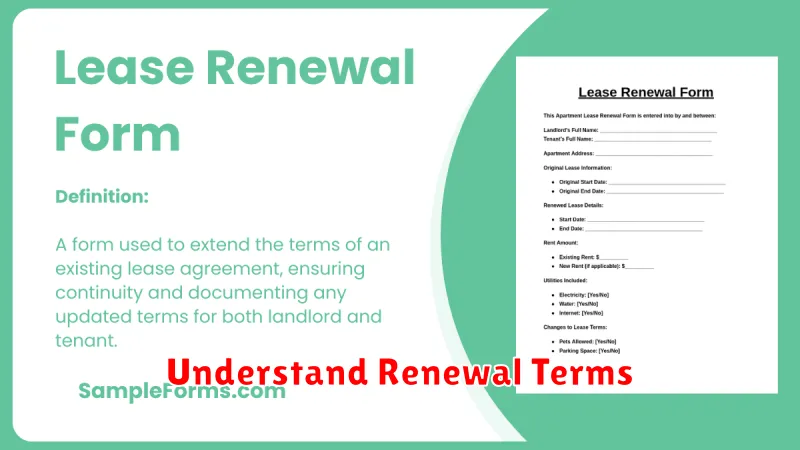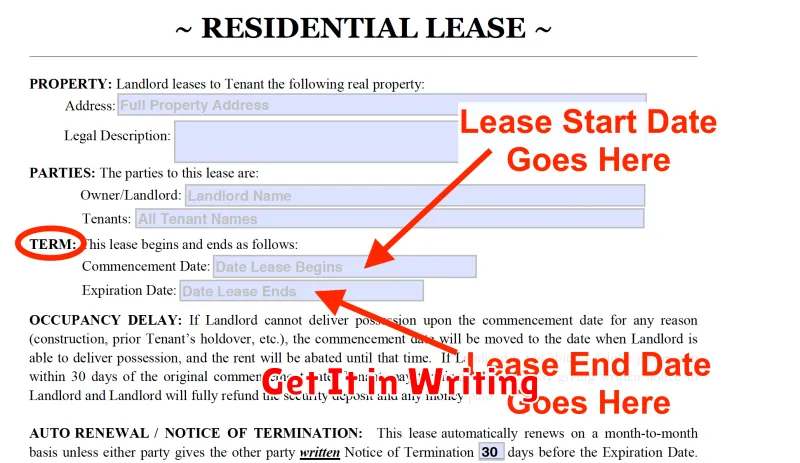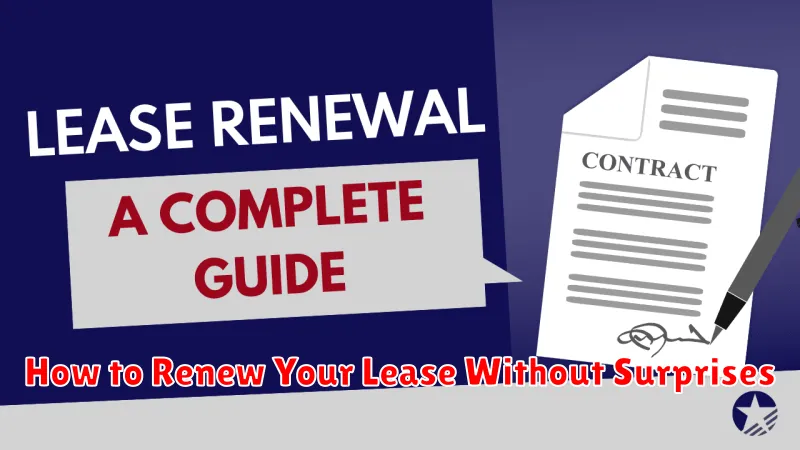Renewing a lease can often feel like navigating a minefield of hidden clauses and unexpected costs. Don’t let your lease renewal become a source of stress and unwanted surprises. This article will provide a comprehensive guide on how to navigate the lease renewal process effectively, equipping you with the knowledge and strategies needed to secure the best possible terms for your rental agreement. We’ll cover crucial aspects such as understanding your current lease terms, negotiating with your landlord, and knowing your tenant rights. Whether you’re renting an apartment, house, or commercial space, understanding the lease renewal process is vital to securing a stable and agreeable living or working situation.
From reviewing your existing lease agreement to understanding your state’s laws regarding rent increases and lease terms, we’ll break down every step. Learn how to effectively negotiate with your landlord to achieve a mutually beneficial agreement. Discover the essential elements to include in your renewed lease and avoid common pitfalls. This guide will empower you to approach your lease renewal with confidence and ensure a smooth transition into the next term of your tenancy. Prepare yourself for a successful lease renewal, free of surprises and brimming with confidence.
Know When Your Lease Expires
Knowing your lease expiration date is the first critical step in the renewal process. Failing to understand this key date can leave you vulnerable to unexpected rent increases or even eviction. Locate your original lease agreement. The expiration date should be clearly stated within the document.
If you can’t find your lease, contact your landlord or property management company. They are obligated to provide you with this information. Keep a record of your lease expiration date in a safe place. Setting a reminder on your phone or calendar several months in advance is highly recommended. This provides ample time to decide whether you wish to renew, negotiate terms, or search for a new property.
Understanding your lease terms is also essential. Some leases automatically convert to a month-to-month tenancy after the initial term expires. Others may require formal renewal procedures. Reviewing these details well in advance of the expiration date will prevent unwanted surprises and allow for informed decision-making.
Understand Renewal Terms

Before signing a lease renewal, carefully review all terms and conditions. Do not assume they are identical to your current lease.
Pay close attention to any changes in:
- Rent: Is there an increase? How much?
- Lease Duration: Is it another year? A shorter term? Month-to-month?
- Responsibilities: Are there any changes to maintenance, utilities, or other responsibilities?
- Clauses: Review any updated pet clauses, guest policies, or other rules.
If anything is unclear, ask your landlord for clarification before signing. It’s crucial to fully understand your obligations under the renewed lease.
Discuss Rent Increases
Rent increases are a common occurrence when renewing a lease. It’s crucial to understand your local laws regarding allowable increases and how much notice your landlord is required to provide. Some areas have rent control or stabilization measures that limit increases.
Open communication with your landlord is key. Inquire about potential rent increases before your lease expires. This allows you time to negotiate or explore alternative options. Understanding the market value of comparable rentals in your area can strengthen your negotiating position.
Don’t hesitate to negotiate. If the proposed increase is higher than you anticipated, present a reasonable counteroffer based on market rates and your payment history. Highlighting your reliability as a tenant can be beneficial during these discussions.
Request Needed Repairs
Before renewing your lease, carefully inspect your unit for any necessary repairs. This is crucial for avoiding potential disputes or unexpected costs later on.
Create a comprehensive list of all needed repairs, both minor and major. Be specific when describing the issues. For example, instead of “bathroom problem,” write “leaking faucet in the second bathroom.” This clarity helps your landlord understand the scope of the work.
Submit your request in writing to your landlord. This provides a documented record of your repair requests and their responses. Keep a copy of the request for your own records.
Discuss timelines for completion with your landlord. This ensures that you are both on the same page regarding when the repairs will be addressed, ideally before you sign the renewed lease.
Get It in Writing

A verbal agreement offers little protection should disagreements arise later. Document every agreed-upon change to your lease terms. This includes rent adjustments, lease duration, pet policies, parking arrangements, and any repairs or renovations.
A written lease addendum is the best way to formalize these changes. This document acts as a supplement to your original lease and should be signed by both you and your landlord. It ensures that both parties are held accountable to the new terms and provides a clear reference point if issues arise.
If a full addendum isn’t feasible, confirm agreed-upon changes via email or a formal letter. This written record, while not as robust as an addendum, still provides some level of documentation should disputes arise.

